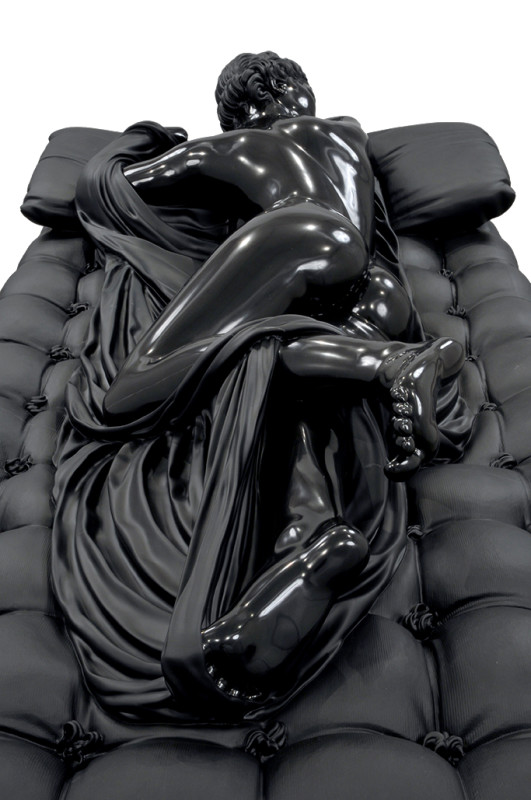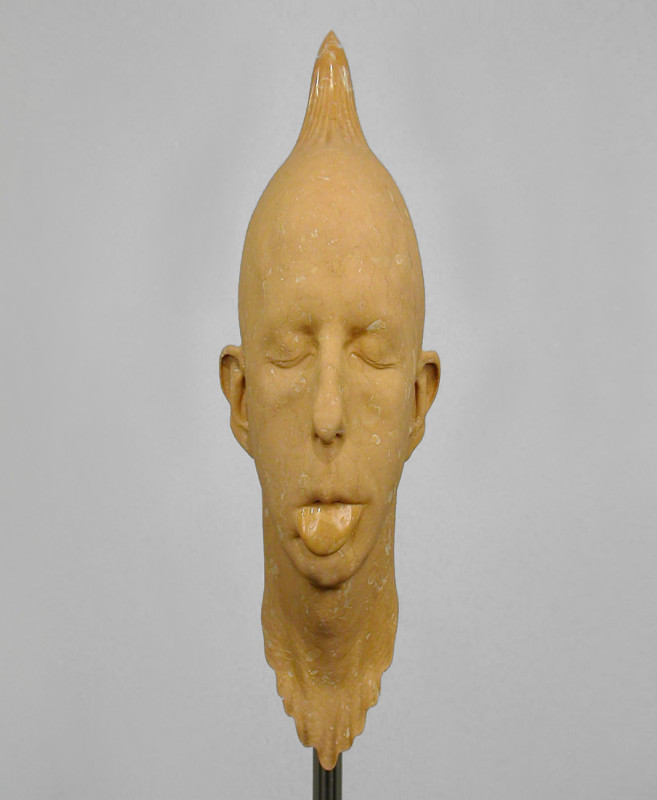How are the classics of art being perpetuated in their meaning today?
“The End of History”, the impressive exhibition at Villa Panza of Barry X Ball, the famed Californian sculptor born 1955, emphasises the persistence of the value of artwork over the time. In a close relation between tradition and innovation, the artist uses advanced technologies aiming to replicate the classics of art in contemporary forms and images.
Text by: Fiammetta Cesana
“I want my work to be imbued with the intensity that was a feature of the art of the past and that I struggle to discern in the art of the present day. My work has always paid palpable homage to historic European precedents (especially those from Italy), with which I am interacting even more closely in my new sculptures. Using high-tech equipment such as a 3D scanner, high-resolution digital cameras, powerful computers and 3D modeling software, I can digitize the works directly at the museums, and then through subsequent technological manipulation I can create my sculptures” – Barry X Ball
Hosted at Villa Panza – an enchanting 18th century property in Varese, owned by FAI (the National Trust for Italy) and internationally renowned for its contemporary art collections – the exhibition is the first complete retrospective of the artist’s work. It is curated by Anna Bernardini, Director of Villa Panza & the Panza Collection, and Laura Mattioli, an art historian, collector and founder of the Center for Italian Modern Art in New York.
In an immersive journey through various rooms and installations, the visitor meets from his early works of 1980s, based on minimalist and abstract forms, up to the most recent productions such as “Portraits” and the latest “Masterpieces”. Each piece of art is deeply integrated into the Villa’s vibrant space, making the sculptures part of the architectural environment.
How do past and present of art come together?
What is constantly crucial in his ongoing absolutist work is the image, since in the image we can contemplate temporal interrelations, where the residues of the past merge with present realities. Thanks to 3D scanning Barry X Ball is able to bring the intensity of classic artworks into the present time… but he doesn’t limit his work to a copying practice. Combining virtual design and computer modeling with traditional techniques, such as intaglio and hand-polishing, he purses what is called “the utopia of a material”. Metal, marble, alabaster, onyx and lapis lazuli, are the dominated and sublimated natural elements which give to his sculptures a unique meaning.
How does Barry X Ball actually dominate and sublimate the material?
In “Portraits”, we see how technical replicability blends with the uniqueness of the material, such as in the portrait of Laura Mattioli (2000-2005) in lapis lazuli and stone, and in Matthew Barney Dual-Dual Portrait (2000-2007) in white and red Mexican onyx.
Then in “Masterpieces”, reinterpreting works of the history of art converts the meanings of the classics into something more universal, plastic, tangible… For example, in Sleeping Hermaphrodite, in black Belgian marble, and the double diptych in which the subjects Purity and Envy play with technical virtuosity and seductive sensuality.

In a new form of replication of art, the sculptor so enhances the value of cultural sedimentation, preserving the seriality of classics with a contemporary way of making art.
Simultaneously, there are other works on display at Castello Sforzesco: an unprecedented Pietà (2017) tribute to the famous Pietà Rondanini, exhibited for the occasion in the Sala degli Scarlioni of the Museum of Ancient Art in Milan in an ideal connection with the original Michelangelo. In the same room the powerful Pseudogroup of Giuseppe Panza (1998-2001) is on show: a tribute that Milan and Barry X Ball want to render to Giuseppe Panza, a pioneer collector who was formed in this city and lived for many years in a cultural milieu, the starting point of his research and adventure.
“The End of History”
Villa Panza & the Panza Collection, Varese, Italy
Barry X Ball interprets the “Rondanini Pietà” at Sforza Castle in Milan
From Thursday 12 April to Sunday 9 December









